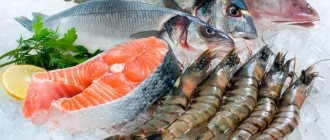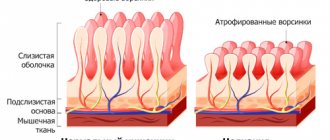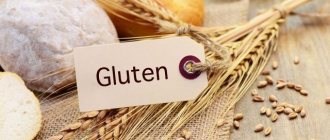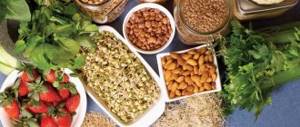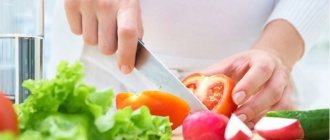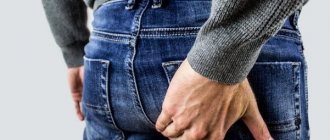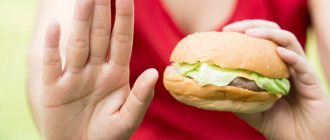With food, a person receives a large amount of useful substances. However, some of them are not completely absorbed. As a result, this leads to a deficiency of a certain component. For example, a person receives only 20% of the total iron content from food. With a lack of this element, a disease such as iron deficiency anemia develops. Of course, diet in this case does not save you from the disease, but it allows you to make therapy more effective. Nutrition for iron deficiency anemia is of particular importance.
What should iron be like?
When choosing food products, you should focus not on the total iron content in them, but on the form in which this component is found. Only in this case will dietary nutrition for anemia produce results. Experts recommend eating foods that contain iron in the form of heme. Most of this component is found in meat in this form.
Duration of diet for anemia
Nutrition that helps increase hemoglobin in the blood is designed for long-term use; A diet for iron deficiency anemia is prescribed by a doctor. Any specialist will tell you that restoring the optimal level of iron in the body is not easy; it is a long process.
Patients undergo regular blood tests, and when the level of the microelement is normalized, the diet plan is canceled. The eating habits that are developed during treatment can be used in the future.
One of the popular methods of treating anemia is table No. 11, it includes dishes enriched with animal protein. For a varied diet, patients are allowed to include ingredients of plant and animal origin in their diet.
Which meat to choose
Of course, not all meat products are the most beneficial for anemia. For example, parenchymal organs, kidneys, liver, and fish contain a lot of iron. However, they are extremely rarely recommended for diets, since the important component in them is in a difficult-to-digest form. To be more precise, iron in such products is present in the form of hemosiderin and ferritin.
This component is best absorbed from eggs, corn, rice, spinach, fruits, legumes, veal and other types of meat.
How much iron is absorbed
In any case, nutrition for anemia in children and adults should be balanced. Many people think that this component is present only in meat products. This is wrong. Iron is found in vegetables, fruits, and even herbs. When dieting, a person receives 2.5 milligrams of this substance per day. At the same time, up to 15% of iron is absorbed from meat products, and up to 5% from products of plant origin.
Diet recipes for anemia
When using the list of allowed foods during a diet for anemia, you can prepare dishes from the diet according to the following recipes.
Roast beef
Roast beef
Ingredients:
- Beef 500 gr;
- Potatoes 500 gr;
- Onions 2 pcs;
- Carrots 1 piece;
- Vegetable oil 2 tbsp;
- Greens to taste;
- Salt.
Cooking method:
- Peel potatoes, onions and carrots.
- Finely chop the onion and grate the carrots.
- Fry the onion in a frying pan heated with vegetable oil until golden brown, then add the carrots, simmer for 4 minutes, stirring occasionally.
- Cut the potatoes into cubes and place them in a mold (clay pot, glass baking tray). Add vegetable gravy to the potatoes.
- We wash the beef, dry it, cut it into small pieces, and add it to the vegetables.
- Salt the dish and fill it to the top with water.
- Bake in an oven preheated to 180 degrees for 45 minutes.
- Before serving, sprinkle the roast with chopped herbs to taste.
Anemia: food
Diet for this disease is very important. Following this will speed up the healing process. Nutrition for anemia should include the consumption of foods such as honey, fruit juices, apples, prunes, raisins, apricots, peaches, greens, eggs, chocolate, cocoa, legumes, oatmeal and buckwheat, porcini mushrooms, beef, chicken, meat turkey and rabbit, beef tongue and, of course, hematogen.
You should include some fruits in your diet, which should include apples, peaches and apricots. You should not give up juices and fruit drinks that are rich in succinic, malic and ascorbic acids. After all, such substances only improve the absorption of iron.
Sample diet menu for anemia
Below is a sample diet menu for anemia.
Monday
- Oatmeal with dried fruits;
- Chicken soup, two pieces of bread, two pork cutlets;
- Citrus juice;
- Puree with fish and vegetables.
Tuesday
- Milk buckwheat porridge with honey;
- Beef borscht, bread;
- Rose hip decoction;
- Stewed liver with vegetables, Greek salad.
Wednesday
- Egg omelet, vegetable salad;
- Fish soup and two slices of bread;
- Pomegranate juice;
- Roast beef.
Thursday
- Rice porridge with milk and berries;
- Mushroom soup, bread;
- Grapefruit juice;
- Cod meatballs, pasta.
Friday
- Curd cheese pancakes with sour cream and honey;
- Buckwheat soup with bread, beef cutlet, bread;
- Citrus juice;
- Spaghetti with meatballs in tomato sauce. Cucumber and tomato salad.
Saturday
- Oatmeal with honey;
- Seafood soup, two slices of bread:
- Cherry compote;
- Pea porridge, beef cutlet.
Sunday
- Muesli with berries and honey;
- Rice soup with meatballs, two slices of bread;
- Dried fruits compote;
- Salmon steak with vegetables.
Half an hour before bedtime, it is recommended to drink 1 glass of fresh fermented milk product.
What foods improve iron absorption?
To get rid of the disease, the patient must eat foods that contain not only iron, but also microelements that help normalize hematopoiesis and ensure the active activity of enzymes that normalize metabolism. There aren't that many of them.
Substances that improve metabolism, as well as the digestibility and absorption of iron, include manganese, zinc, copper, cobalt and others. There is a list of products that contain these microelements.
Thus, cobalt is most abundant in beets, pears, cherries, apricots, raspberries, black currants, gooseberries, grains, legumes, milk, kidneys, and liver. The daily requirement of an adult for this substance is from 0.05 to 0.2 milligrams.
Products that are rich in copper include beef and liver, horseradish, watermelon, black currants, strawberries, mushrooms, legumes, and various cereals. The daily human need for this component is from 2 to 3 milligrams.
Zinc is found most in eggs, mushrooms, legumes, cheese, beef, lung, kidney, liver and yeast. The daily human need for this substance is from 10 to 15 milligrams.
As for manganese, it is found in black currants, raspberries, pumpkin, beets, spinach, dill, parsley, legumes and cereals. The daily requirement is from 5 to 7 milligrams.
Nutrition for anemia should be prepared taking into account all the nuances. In addition to iron-containing foods, a person should also consume those that contain components that promote better absorption of iron.
Features of the diet for anemia
The goal of a therapeutic diet for anemia is to provide the body with all nutrients, vitamins and microelements, in particular iron, which is necessary to increase hemoglobin levels. This diet increases the body's defenses, restores its functions and improves the patient's quality of life.
The diet for iron deficiency anemia is physiologically complete, its calorie content is high, and the content of proteins, microelements and vitamins is increased. Carbohydrates remain at the standard level, and the fat content is slightly reduced.
According to Pevzner’s classification, the diet for iron deficiency anemia is treatment table No. 11. According to Order No. 330 of the Ministry of Health of the Russian Federation, in medical institutions, nutrition for this disease corresponds to a high protein diet (HPD).
Daily content of nutrients, vitamins and microelements:
- proteins – 120g, of which at least 60% are proteins of animal origin;
- fats – 80-90g, of which 30% vegetable fats;
- carbohydrates – 300-350g;
- vitamin A – 1 mg;
- carotene – 8.5 mg;
- vitamin B1 - 2 mg;
- vitamin B6 – 4 mg;
- nicotinic acid – 30 mg;
- vitamin C – 200 mg;
- sodium - 4g;
- calcium - 1.4g;
- magnesium - 0.6g;
- phosphorus – 2.2g;
- iron - 0.055g.
The energy value of the diet is 3000-3500 kilocalories per day.
Principles of diet for anemia
Basic principles of diet for anemia:
- Diet. Meals should be fractional: from 4 to 6 times a day. Frequent eating in small quantities stimulates the patient's appetite (and with anemia it is usually weakened), allows maximum absorption of nutrients, vitamins and microelements, and also normalizes the functioning of the digestive tract, which is important if the patient has concomitant diseases. Fractional nutrition allows the body to better perceive dishes and foods that are high in calories.
- Treatment of the underlying disease. The main principle of treatment is the identification of disorders in the body that led to anemia and their correction. As is known, iron deficiency anemia is not an independent disease, but only one of the symptoms of a pathology. Therefore, following a diet will be ineffective without treating the underlying disease.
- Food temperature. The food temperature should be standard, as in other diets (15-60 degrees Celsius). Too cold or hot food irritates the gastrointestinal tract, which negatively affects digestion and, in particular, the absorption of iron.
- Culinary processing. Any culinary processing of products (stewing, steaming, boiling or baking) is allowed, except for frying. When frying, a large amount of fat is used, which is contraindicated in case of anemia; products of their oxidation are formed, which negatively affect the human body as a whole, and especially the digestive tract.
- Presentation of dishes and serving. To stimulate the appetite of a patient with iron deficiency anemia, it is important to set the table beautifully and prepare tasty and appetizing-looking dishes.
- Alcohol. Alcohol intake in medical nutrition for iron deficiency anemia is excluded. Ethyl alcohol interferes with the absorption of iron and other trace elements and negatively affects the functions of the liver, where hemoglobin is destroyed and bilirubin is synthesized. And since during anemia the body also experiences a lack of hemoglobin, in the presence of an underlying disease this can lead to jaundice.
- Salt and liquid. The consumption of free fluid during anemia is within the physiological norm (2-2.5 liters). A decrease in drinking norm leads to blood thickening, which aggravates the hypoxic processes that occur with anemia. Table salt is consumed in a normal amount - 8-12g, and with reduced gastric secretion for the synthesis of hydrochloric acid, the consumption of sodium chloride increases to 15g.
Honey - a source of health
This product has long been used to treat various ailments not only in folk medicine, but also in traditional medicine. Honey contains from 40 to 60% fructose. But it is this component that improves the absorption of iron by the intestines. In addition, this product is rich in biologically active substances and microelements. For those who develop anemia, experts recommend consuming dark varieties of honey, since they contain 4 times more iron, 2 times more copper, and 14 times more manganese than light varieties.
Most patients with anemia experience a decrease in the acid-forming function of the stomach. This occurs as a result of sideropenic syndrome. In such a situation, honey should be consumed exclusively before meals. In some patients, the acid-forming function, on the contrary, is increased. In this case, honey should be consumed approximately two hours before meals. If there are no contraindications, then the patient can eat this product three times a day, up to 100 grams.
Causes of anemia
Anemia is most often caused by poor diet, namely a lack of iron. Cases of transmission of the disease “by inheritance” are not uncommon. But the cause of anemia is not as important as the way to treat it.
After the disease is diagnosed, doctors prescribe special medications. It is possible that tablets are sufficient for a one-time solution to the problem. However, if you approach treatment comprehensively, you will have to completely change your lifestyle, including eating habits.
Why are we talking about lifestyle in general? The fact is that the quality of vitamin absorption by the body is influenced by factors such as rest and mobility. In other words, a person should lead an active lifestyle, to the best of his ability, of course, and also get good sleep. Only in this case will both drug treatment and diet be beneficial.
Healing herbs and diet
Nutrition for anemia in the elderly and children can consist not only of food, but also of drinks based on medicinal herbs. For this disease, experts recommend consuming herbal infusions that contain fruits rich in iron. These include black currants, elderberries and rose hips. It is worth noting that these fruits contain ascorbic acid, which is known to increase the absorption of iron.
Also, for anemia, a collection consisting of nettle leaves, string, strawberries and black currants is recommended.
What to exclude from your diet
Dietary nutrition for anemia should be prepared correctly. After all, some substances impair the absorption of iron. Thus, you should differentiate between taking medications for anemia and dairy products. Calcium can significantly reduce iron absorption.
In addition, you should not eat foods that contain oxalates, glycine-conglycine, lectins, pectins, phosphates, tanates, phytates. Similar components are present in corn, rice, bran, baked goods and cereals. You should also avoid nuts, sorrel, spinach, rhubarb, asparagus, cabbage and beets.

